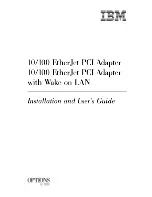
16
Parameter Description
Key Length
There are two kinds of key lengths: 64-bit and 128-bit. Larger key
length will provide higher level of security, but the throughput will
be lower.
Network Key
The keys are used to encrypt data transmitted in the wireless
network. Fill the text box by following the rules below.
64-bit
– Input 10-digit Hex values as the encryption keys. For
example: “0123456aef“.
128-bit
– Input 26-digit Hex values as the encryption keys. For
example: “01234567890123456789abcdef“.
Confirm Network Key
Enter the same network key to confirm.
Key Index (Advanced)
Select one of the four keys to be the data encryption key.
3.4.2 Enable WPA in Windows XP
Wi-Fi Protected Access (WPA) is a specification of standards-based, interoperable security
enhancement that strongly increases the level of data protection (encryption) and access control
(authentication) for existing and future wireless LAN systems. The technical components of WPA
include Temporal Key Integrity Protocol (TKIP) for dynamic key exchange, and 802.1x for
authentication.
There are two types of WPA security: WPA-PSK (no server) and WPA (with server). WPA requires a
Radius Server to complete the authentication among wireless stations and Access Points. Typically,
this mode is used in an enterprise environment. WPA-PSK uses a so-called pre-shared key as the
security key. A pre-shared key is a password that each wireless station uses the same key to access
the network. Typically, this mode will be used in a home environment.
To enable the WPA function in Windows XP, the following software systems are required:
1. Windows XP Service Pack 1 with Windows XP Support Patch for Wi-Fi Protected Access program
in addition.
2. Configure the card by Wireless built-in utility (Wireless Zero Configuration).













































